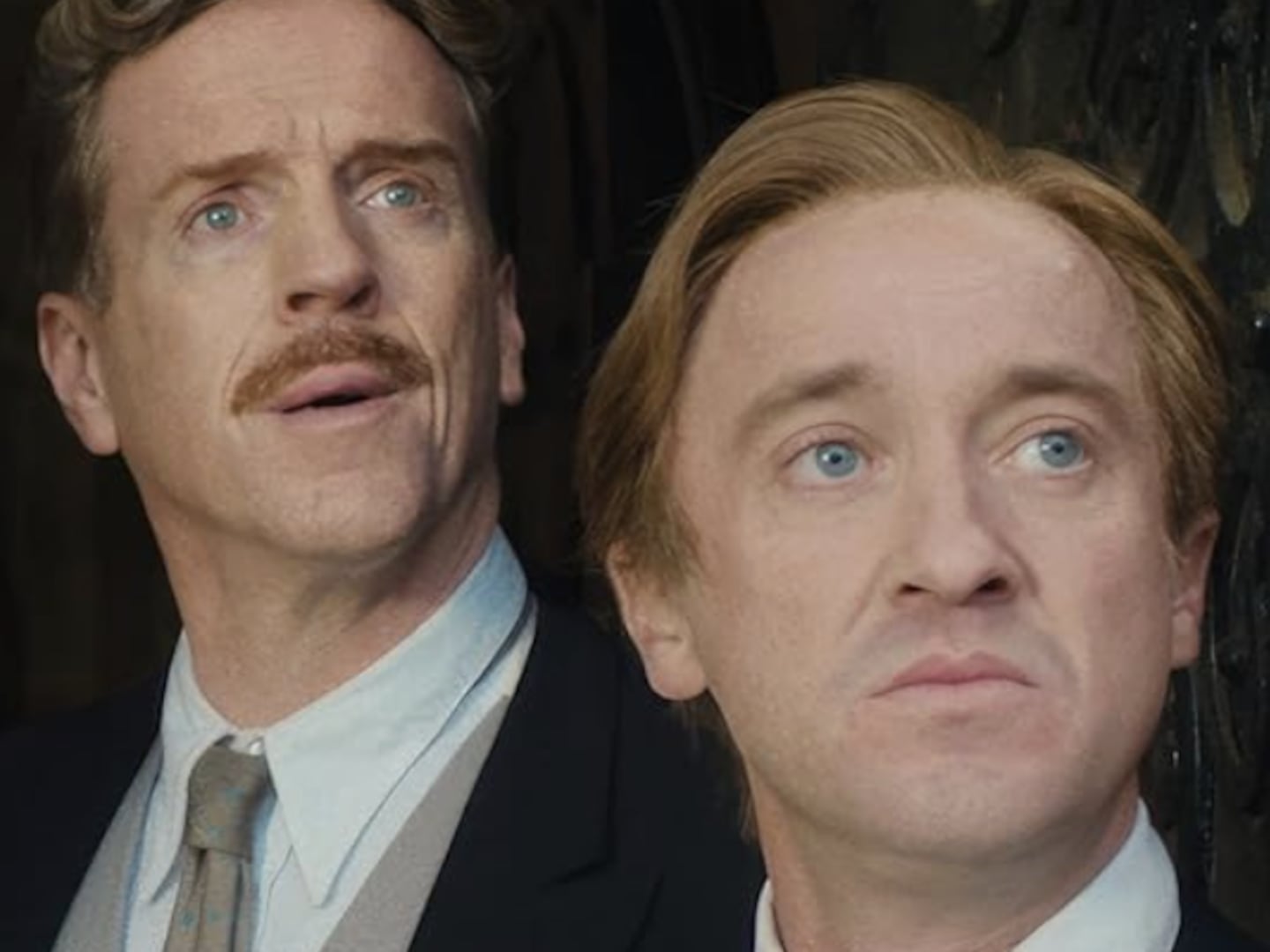Hayao Miyazaki is doing it: He’s finally retiring. No, seriously—for real this time.
The famed director and co-founder of Studio Ghibli, one of the greatest film production companies in the medium’s history, announced that his latest film would actually be his last one. The Boy and the Heron, which premieres in North America at Toronto International Film Festival Sept. 7 (following a Japanese theatrical release in July), follows up Miyazaki’s previous “final” film, 2013’s The Wind Rises. While that semi-autobiographical story about a man who built warplanes felt like an appropriate denouement for a wonderful career, early word on Heron is that it’s an even more magnificent note on which the 82-year-old director bows out.
In celebration of this exciting moment—that is, the Western world’s chance to see this hotly anticipated film—the Daily Beast’s Obsessed team came together to share our favorite Studio Ghibli movie moments. It’s a list that will hopefully tug at your heartstrings, filling you with nostalgia for the anime you grew up with; at the same time, our picks speak to the relevance of Ghibli’s rich oeuvre for all ages.
The Cat Bus Saves the Day (My Neighbor Totoro, 1988)
A lot of metropolitan public transportation departments ought to take notes on Studio Ghibli, whose movies have, by far, the best form of transit. The cat bus is always on time. Sure, if you’re like me and you’re allergic, you might need to pop some antihistamine before taking a ride. But at least you won’t be waiting out in the rain for longer than need be, which is a lot more than New York’s MTA can do. Cats don’t even like water. Still, the cat bus is willing to work against the elements to protect the gaggles of creatures who need to move about the countryside near Tokyo.
Totoro is the cutest fluffball of the entire movie, without a doubt, but the cat bus takes a memorable second place. Okay, maybe the cat bus isn’t that cute; upon rewatching, it’s actually a bit creepy, with holes in the middle of its body and rats as taillights. But as a fan of both felines and public transportation, I enthusiastically support the cat bus and wish I could ride it myself. After the cat bus picks up Totoro in the movie, a lame regular bus pulls up to pick up Mei and Satsuki, the film’s human stars. Not only could they have arrived in a more timely manner—they could’ve done it in style, too, had they taken a chance on the magical cat bus. —Fletcher Peters
Kiki and Tombo’s bike ride (Kiki’s Delivery Service, 1989)
Bike scenes are a cherished theme in Studio Ghibli films (see: My Neighbor Totoro, From Up on Poppy Hill, and Whisper of the Heart) and in 1989’s Kiki’s Delivery Service, Hayao Miyazaki delivered one of his best. Kiki is a young witch determined to follow tradition and strike out on her own, but she’s also 13—which means she’s a little moody and sometimes feels emotionally isolated. That is, until she befriends Tombo, an impossibly cheerful boy who wants nothing more than to fly. When he takes Kiki for a ride on his propeller bike, she enjoys a moment of true freedom. It’s basically impossible to watch these two careen down a hill and eventually (if briefly) take flight without remembering a certain kind of childlike wonder. Every time I watch this scene, I remember long afternoons spent riding bikes with the kids next door, hurtling down steep hills and taking sharp turns, all the while feeling both terrified and invincible. That’s the magic of Studio Ghibli, an animation house that knows exactly how to nourish the small child living in all of us, no matter how much older we get. —Laura Bradley
Seiji tells Shizuku he loves her (Whisper of the Heart, 1995)
@jiroochi This ending💙 #whisperoftheheart #whisperoftheheartedit #studioghibli #スタジオジブリ #fyp ♬ Barça - .
For as imaginative and otherworldly as the best Studio Ghibli films often are, I’ve always had a fondness for those that are more firmly grounded. 1995’s Whisper of the Heart, the only directorial effort from Yoshifumi Kondo (who sadly died three years later), is one such film. The film follows hopeless young romantic Shizuku, whose dreams of becoming a writer feel impossible while bound to a small-town life. While the film balances these with Ghibli’s trademark fantastical moments—courtesy dreamlike sequences based on Shizuku’s own stories, about a dapper talking cat—the real core of the film is Shizuku’s budding relationship with her classmate, aspiring violin maker Seiji.
Their enemies-to-lovers arc is delectable, adorable, and stirring, and its climax gives way to my favorite final moment of any animated film. After talking around their obvious feelings for each other for the entire movie, Seiji finally finds the confidence to confide in Shizuku. He’s going to pursue his dreams, like they’ve discussed. Will she marry him once he’s achieved them? She nods, of course, and as they move to embrace, he grabs her: “Shizuku, I love you!” Kono knew it was a waste of time to mince words. It’s a powerful, even funny reminder to always say what you mean. —Allegra Frank
Howl dyes his hair and gets upset (Howl’s Moving Castle, 2004)
There are better Studio Ghibli movies than Howl’s Moving Castle, Miyazaki’s 2004 adaptation of the Diana Wynne Jones fantasy novel of the same name, but the romance that builds between quiet, practical hatter Sophie and Wizard Howl, a gleefully extra sorcerer with a penchant for fabulous clothes and running away from his responsibilities, never fails to sweep me away into blissful limerence. I’m obsessed with everything about Howl, beautifully voiced in the English-language dub by Christian Bale.
The character’s fussiness and obnoxious vanity somehow only make him more endearing, as evidenced by my favorite Ghibli scene ever, in which Howl accidentally dyes his chic little blonde haircut bright orange and throws an epic, magical tantrum as his new friend Sophie watches, aghast. He slumps over in his seat in his towel, despondent, and his hair turns black to match his misery. Shadows leak from the walls and Howl’s body oozes green goo.
“I give up,” Howl moans. “I see no point in living if I can’t be beautiful.” While this relatable line forever and always establishes Howl as one of the girlies, it’s Sophie’s reaction that breaks your heart and makes the scene peerless: “I’ve had enough of you, Howl. I’ve never once been beautiful.” Of course, she is, and by the time Howl and Sophie kiss at the movie’s end, Sophie is just as aware of this fact as the audience is. —Helen Holmes
Sōsuke discovers Ponyo in the water (Ponyo, 2008)
I don’t have my own children, but I have two adorable twin nephews. I’ve found that, ever since they’ve been around, I’ve started to emotionally interact with movies in a different way. Ponyo is a great example of a movie that hits me differently. I used to think of that early scene of Sōsuke first encountering the fish he would name Ponyo in the surf as nothing more than the start of a very cute movie. Now I see it as a seismic moment in a young child’s life, the start of his greatest adventure.
For all their whimsy, there’s something powerfully realistic about Studio Ghibli films. In Ponyo, that’s the unshakable thrill that humans feel when they experience something that seems intangible, but is so recognizable—a sense of wonder. There are moments in Ponyo that wreck me: the instantaneous, unshakable devotion between Sōsuke and Ponyo; the adorable curiosity of youth, like when they dip their heads in the water after the flood; the heartbreaking bravery they show when they join hands and walk up the road to look for Sōsuke’s mother. But it’s the start of it all—the simple act of a child discovering a fish, and the adventure it will lead him on—that invigorates me the most. I can’t imagine how amplified that feeling must be for a child. —Kevin Fallon
Jiro confronts his mortality (The Wind Rises, 2013)
The Wind Rises is arguably Miyazaki’s most outright affecting film, shedding his penchant for fantastical allegories and instead dealing with powerfully human storytelling. It’s a semi-fictionalized tale of Jiro Horikoshi, the aspiring pilot who ultimately became an engineer for the Japanese military just before World War II, after his nearsightedness prevented him from flying planes. Jiro meets a kind, young painter named Nahoko after a chance gust of wind unites them one afternoon. The two lose touch shortly after their initial encounter, but reconnect years later, falling for each other despite Nahoko’s warning that her chronic illness may end their epic love all too early. As an early cornerstone of a formative and complicated love of my own, the movie has only become more resonant as the years have passed.
The film is a heavy meditation on how beauty dances through the air, unseen but omnipresent. As Jiro struggles with the idea of his beloved machines being used as instruments of war, the natural coexistence of love and death comes into focus. By the film’s end, Jiro realizes that he can’t control the use of his designs any more than he can command the elements that brought him his two undying loves: flying and Nahoko. He can only continue to live, and appreciate that his existence means something unexpected could sail into his life on the wings of another breeze. It’s a sobering, melancholic ending, fitting for what was going to be Miyazaki’s final film before the director came out of retirement a decade later. It’s also the perfect reason to see any Ghibli film in theaters whenever possible; all of the massive emotion embedded into each of the studio’s movies hits like a freight train when staring up at the big screen, and nothing feels quite so life-altering as that kind of seismic impact. —Coleman Spilde
Princess Kaguya runs away (The Tale of Princess Kaguya, 2013)
Miyazaki may be the household name, but Isao Takahata had just as large a role in defining Studio Ghibli and leading it to critical acclaim. His final film before his 2014 retirement (and death in 2018), the experimental, gorgeous Tale of the Princess Kaguya, is a fitting capper on a fantastic career. In his telling of the Japanese folktale, about a moon princess who comes to Earth in a piece of bamboo, Takahata takes an abstract, painterly tack. Characters appear rendered by a calligraphy brush; backgrounds are watercolor paintings. It contributes to the film’s increasingly melancholic air, as the blurred lines and colors communicate Kaguya’s growing sadness and fear.
The most striking moment of this is perhaps one of the most beautiful sequences ever committed to screen: When Kaguya hears several of her boorish suitors gossiping about her, she panics—so much so that she immediately runs away from the castle her adoptive parents have declared that she call home. As Kaguya out of the castle, her features become obscured; her body becomes unrecognizable. She crashes through walls and runs toward the horizon line, below a giant moon, as her seemingly infinite robes fall to the ground and off her body. When we see her in profile once more, the world around her is in grayscale, as if drawn in pencil; our princess has come fully undone. It’s animation at its marvelous, masterful apex. —AF






